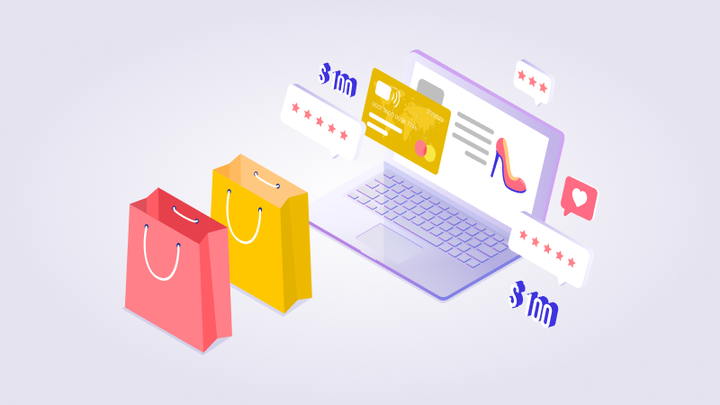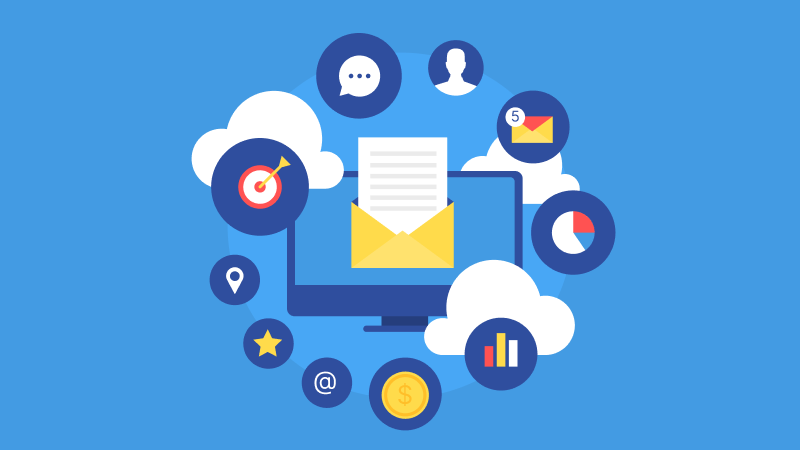E-commerce analytics in 2023: Leveraging valuable insights to drive sales with MagicGPT

The global e-commerce business is growing, and here are clear stats to prove it:
- 20.8% of retail purchases are expected to take place online in 2023
- By 2026, 24% of retail purchases are expected to take place online.
- By 2026, the e-commerce market is expected to total over $8.1 trillion
E-commerce analytics is one of the driving forces of this increase. With the advent of e-commerce analytics, marketing departments of e-commerce companies no longer have to take a shot in the dark regarding marketing campaigns. Instead, you can now gain valuable insights into your business; to see what's working and what is not. With analytics, you can make more informed marketing decisions and drive more sales and revenue for your business now than ever.
Every company has big data in its future, and every company will eventually be in the data business. --Thomas H. Davenport
In this blog post, here is what you are going to learn
- What e-commerce analytics entails
- How analytics can impact your e-commerce business
- Types of e-commerce metrics
- E-commerce best practices
So grab your coffee, and let's dive into it.
What does e-commerce analytics entail?
E-commerce analytics entails gathering and analyzing data on everything that affects your e-commerce business and leveraging it to improve your marketing and increase sales. Data tells a story, a trend. Data reveals the secret of why your marketing campaign performs the way it is. You don't need a whole data analytics team to get your answers; AI-powered analytics tools have made things more accessible, efficient, and cost-effective.
How Analytics can Impact Your E-commerce Business
- Increase in customer lifetime value: With e-commerce analytics, you get to know the key factors that led to a customer buying from you. When you know these factors, you can nurture these customers to come back for more. Studies have shown that existing customers spend 67% more than new customers and it is easier to get existing customers to buy from you than acquiring new ones. Analytics will, therefore, help you get more profit while minimizing your customer acquisition cost.
- Determination of business performance and detractors: Analytics provides a detailed overview of your business performance. It helps you see what is working and what is not. That way, you can double down on what works and get maximum results.
- Customer behavior and demographic segmentation: With analytics, you get to know why your customers act the way they do. What are the key drivers behind their buying decisions? Is there a particular brand they are likely to buy more than the others? Which location buys from you the most and which one buys the least? Having access to this information helps you recognize trends from customer behavior which you can optimize for sales.
- Propensity driven audience for promotional campaign: When you want to execute a marketing campaign, targeting everyone on your list will cost more and is less efficient. However, with analytics, you can find out which customers on your list have the most propensity to buy the product you want to sell and target only those to get the best from your campaign.
- Increase sales and revenue: Having a customer buy from you is great, having them come back for a second purchase is even better. With e-commerce analytics, you can uncover the key factors to make your first time customer come again. You can also get valuable insights into potential customers you can target for a second purchase and turn to repeat customers, thereby increasing their customer lifetime value.
- Prediction of campaign revenue: Imagine you can predict the conversion rate on a marketing campaign you are about to launch, see key drivers of lead's propensity to buy, and optimize your campaigns for maximum sales. That's what you get with e-commerce analytics. TargetScore is an AI-powered app in the MagicBean suite of apps that gives you insights into the outcomes of your intended marketing campaign by analyzing past transactions.
- Get to know your customers: With e-commerce analytics, you get to know your customers better and tailor your campaign to suit them. For instance, you can get insights into where most of your high-paying customers come from. You can also get insights into their buying pattern and optimize them to generate sales.
- Maximize Trends: Analytics helps you discover trends and maximize them. When you get an overview of how customers related to your products in the past, it serves as a basis for future predictions, and you can maximize the trend to your benefit. For example, you can see where customers that do not convert stop interacting with your business. When you notice this pattern in your campaigns, you can easily examine what is wrong, address it and increase your conversion rate.
- Reporting: As an e-commerce marketer, analytics is your ally. With analytics, you can report effectively to relevant stakeholders in the company on factors that affect your marketing campaigns.
Without data, you are just another person with an opinion. --W. Edwards Deming
Types of E-commerce Metrics
Your e-commerce rotates around three factors
- Your Store
- Your customer
- Your product
These three factors determine your sales. Even if you have a marketing budget the size used for the Barbie movie and you do not optimize these three factors, your marketing campaign will run into a loss. E-commerce analytics is here to prevent that and help you get the best from your campaigns. An e-commerce analytics tool gives valuable insights into your store performance, customer purchase behavior, and product trends. MagicGPT is an AI-powered analytics tool that can answer your business questions within seconds. Enter your question as a prompt and you get real insights into your store, customers, and products.
Here are a few use cases of MagicGPT in getting valuable e-commerce insights:
1.Store performance
Keeping tabs on your store performance allows you to watch your progress. You can get accurate data on how much your store pulls in revenue and profits, with how much was generated from each marketing channel. Simply, enter your question as a prompt.

MagicGPT gives you your answer and can display your answers in different data visualization models for easy comprehension.
Examples of questions on store performance you can ask MagicGPT includes
- Show me the revenue by month in 2023
- What is the return amount by month in the past year?
- What is the percentage distribution of each payment method?
- What is the revenue percentage contribution of each product category?
- What is the average order value by month?
2.Customer Purchase Behavior
Customer purchase behavior is another factor to keep tabs on in e-commerce. There are several metrics under customer purchase behavior which you can type in MagicGPT and get your answer within the snap of a finger. Examples of such questions are
- What is the total count of our customers, and how many have made a second purchase?
- What are the average days between the first and second purchases?
- How long does it take from the second to the third purchase?
- What is the conversion rate from the second to the third purchase?
- How many customers have abandoned their shopping carts in the past quarter?
3.Product trends
Analytics helps you know the status of your products and how your customers interact with them. Here are some of the use cases of MagicGPT when it comes to product trends
- What are the top 10 sold products? Give me the product name, SKU, quantity, and amount
- What are the top 5 returned SKUs in 2023? Give me the SKU, sold quantity, returned quantity, and return rate.
- What products have been the most abandoned in shopping carts in the past 6 months?
- What are the top 5 best-selling new products in the first 28 days? Give me the sold quantity of each day in the first 7 days and then each week of the first 28 days in columns MagicGPT excels in answering business questions based on past events, not future scenarios.
From Data to Dollars, best practices for e-commerce analytics
- Use the right tools: The tool you use for your e-commerce determines how much you enjoy the benefits analytics offers you. When selecting an e-commerce tool, choose one that provides holistic and accurate information and allows easy visualization and interpretation. MagicBean is an AI-powered e-commerce suite of apps that aims to increase your customer's lifetime value by providing you with needed insights. MagicGPT and TargetScore are part of the apps in MagicBean. It is the e-commerce analytics tool you need to get the best of your marketing efforts in 2023. Read more about MagicBean here and book a demo.
- Visualize your data for effortless storytelling: Getting data is excellent, and interpreting the data accurately is even better. Data visualization helps you analyze data obtained from analytics and recognize trends affecting your marketing campaign. MagicGPT allows you to visualize your data, making it easy to interpret and report.

- Utilize data obtained: Analytics are like cheat codes, it tells you the secret to optimizing your marketing campaigns. Data is evidence; act on it and utilize the data obtained to drive your desired results.
Implement MagicGPT to get the best from your e-commerce analytics.
Data will talk to you if you are willing to listen. --Jim BergesonJim Bergeson
With MagicGPT, you can get answers to your e-commerce business questions and help your marketing team be more prolific with conversions. Book a demo today to take your marketing to a new dimension and get the best out of your marketing efforts.



